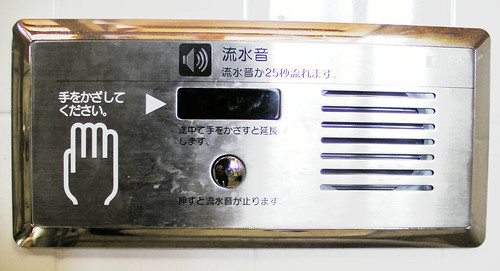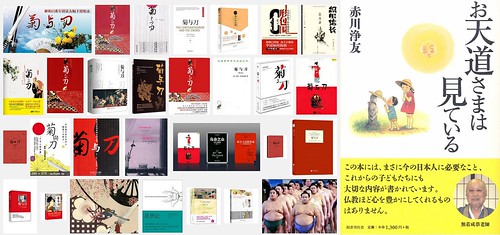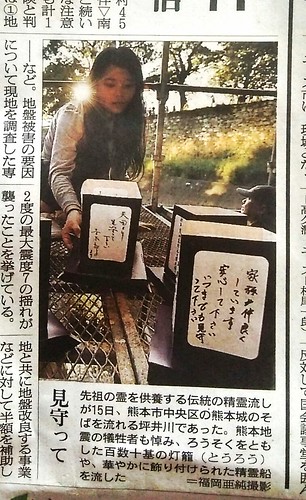Friday, July 29, 2016
The Sound Princess: Japanese Veil

The sound princes or oto-hime is a device for hiding the sound of ones excretions, which emits the sound of running water. It is made by the Japanese manufacturer Toto. Usually only available in women's toilets (hence my inability to take this photo so far) this one was in the disabled persons toilet. The sound continues, it says, for 25 seconds during which time the user would hope to finish their 'ablutions,' which, disguised by the sounds of running water emitted from this device might not have existed at all.
Since the beginning of time, according to Japanese mythology, the Japanese have endeavoured to hide the desire, sexuality, and nature of women so as to raise the feminine (or castrated feminine) to the level of 'social principle' (Kawai, 1982) or role model.
An as a result all the Japanese to a man, aspire to be a nice kind harmonious watashi a first person pronoun used by men and women, originally only indicating, the woman.
To this day the desire, sexuality, and nature of women is so taboo, so off limits, in Japan that Japanese women: read pornography only about men having sex with men; do not use tampons, use toilets hidden further than those of the gents, laugh behind their hands, wrap themselves in layers layers and of underwear, never suffer from flatulence, almost only use the back-channel in mixed-sex conversation, only moan "no," and use electronic sound-emission devices, such as that shown above to disguise and hide the terrible tinkle or splash.
And I mean terrible. When Japanese women show their true nature, they can often wither Japanese men with a glance.
The noise of the sound princess, and many of the other important meaningless noises emitted by Japanese culture (politician's crooning, sports-persons' shouts, Buddhist chants, pachinko cacophony, mid-day and evening come home Tannoy's, supermarket endless tapes, and New Year's temple bells) may have structural similarities with the Biblical fig leaf and the veil. The sound of the sound princess is a audio cover of female desire, as opposed to a visual cover of male desire.
Click here for YouTube Videos with the sound of the sound princess.
Kawai, H. 河合隼雄. (1982). 中空構造日本の深層. 中央公論社.
Labels: horror, japanese culture, matriarchy, nihonbunka, reversal, ring, ringu, tabuu, ホラー, 日本文化
Thursday, July 28, 2016
Coffee Vending Machine Food Preparatation Views

Just as Japanese ramen restaurants, sushi restaurants, and in the extreme fireside grill (robatayaki) restaurants provide their clean freak, and I argue, scopophilic Japanese clientèle with the opportunity to see their food being prepared, so it is with some Japanese coffee vending machines. The coffee vending machine shown above, equipped with several internal cameras, provides purchasers with a video of their coffee being made (centre top). I should have taken a video of the inspiring internal video.
There is always the possibility that the machine is in fact making coffee using instant coffee powder, and showing everyone the same entertainment video but, even if this were not in Japan, the raw, slightly out of focus, steamy nature of the video made me trust the internal view it provided completely and the coffee taste just a little bit fresher.
Visual information augments, and even overwhelms, that obtained by the nose and the mouth. I hypothesise that even if the machine were indeed really using Nescafe and just showing a fake video, I would be fooled into thinking that the beans were ground and the coffee dripped.
Labels: japanese culture, nihonbunka, 日本文化
Shinkansen Bullet Train Urinals

Bullet Train Urinals do not have locks. In place of locks bullet train urinals have windows which allow those outside to see if there is someone using the urinal or not. As a senior British male I find it a little uncomfortable to be seen while urinating, and still more for my being seen to be the only thing that prevents people from opening the door while I am urinating - not that anyone would barge in.
Ideally I would like to be able to emerge from a toilette (Americans are so uptight they have to call them "restrooms") secure in the knowledge that those outside in the corridor do not know what I have been doing in the toilet (washing my hands, or even "resting"). In the case of a urinal cubicle, this practically impossible, but the addition of the window and the lack of the lock makes me feel like I have just urinated en plein air. Urinating outside is something that Japanese men did not feel uncomfortable doing as recently as 20 years ago even in groups.
These days it is only young Japanese boys that urinate outside in groups. Using a Bullet Train urinal makes me feel an age younger than with which I feel comfortable. I respect Japanese men for the their lack of prudery. I note however, that Japanese women are so sensitive that not only would it be utterly unaccepted for them to be seen whilst urinating (kami forbid) but Japanese women use electronic devices (otohime) so that they can not even heard urinating. Japanese women can emerge from toilette cubicles in that ideal situation: no one can be sure of what they have been doing.
Labels: horror, japanese culture, nihonbunka, 日本文化
Saturday, July 23, 2016
Magearna is Reason and Eve

Many Japanese animated movies are meditations on the problem of science and the West, and attempt to present solutions as to how the Japanese - as represented by Satoshi, the boy with an "electric rat" and a woman's voice - can save the world.
The latest movie (Pokémon the Movie XY&Z: Volcanion and the Mechanical Magearna) from the Pokémon franchise, written by Atsuhiro Tomioka the same writer as the last, replaces Hooper and mini Hooper with Volcanion and Magearna. Volcanion, like Hooper, has a hoop, and is a bit too strong for his and his surroundings' good.
the Exquisite Magearna is the first robotic Pokémon built by the those blue eyed, blonde, science fanatics -- Westerners -- that often feature in Japanese animations. Magearna has a metal body, crucifixes for pupils, and a sciency cog-bonnet. Apart from having her own shell-like monster ball, into which she retreats when she is afraid, and the ability to produce bunches of flowers from her hands that put others (other than Volcanion) into a romantic mood, she does not do much other be "ezquisite." But she has great power.
The reason for this is related to her removalable "soul heart," which seems to be the very core of science. This heart soul is also said, in the catch copy for the movie*, in contradistinction to almost all other Pokémon, to have a voice.
For my money, Magearna is the linguistic Other who whispers in the hearts of Western "men". Sometimes as listener she is called Reason, by Jefferson and Dawkins, and shown the greatest respect.
"Fix reason firmly in her seat, and call on her tribunal for every fact, every opinion (Jefferson see Dawkins, 2008, p64)
But her first name was I think Eve, the first in a long line of Western "robotic" pocket monsters. She is robotic in so far as she is linguistic. She doesn't just bond, and sit on the shoulder of her trainers and friends but alas, whispers to them, in romantic voice of her soul heart. She is the Sibyl that Heraclitus writes of.
Her name in Japanese is a pun on "bent hole," but I am not sure if that is any way intentional
This Pokémon movie reached the conclusion that Volcanion should sacrifice himself to save her, and that she should be taken from the land of the blonde blue eyed men and returned to the wild.
I thought Jarvis, the lead scientist and baddie (who is nonetheless forgiven as Japanese baddies always are) a little similar to David Bowie.
I would like to see or write a sequel where it is found that there is a real living pockemon trapped inside Magearna, who is at last released.
*熱き魂(ソウルハート)の声が聞こえるか!? Can you hear the voice of the 'hot soul heart'!?
Why are Pokémon movies and David Bowie better at explaing reality than science? The advance of science may be moved and supported by converse with an artificial monster far more terrible than that pictured above in her imagined Pokémon GO debut.
The latest movie (Pokémon the Movie XY&Z: Volcanion and the Mechanical Magearna) from the Pokémon franchise, written by Atsuhiro Tomioka the same writer as the last, replaces Hooper and mini Hooper with Volcanion and Magearna. Volcanion, like Hooper, has a hoop, and is a bit too strong for his and his surroundings' good.
the Exquisite Magearna is the first robotic Pokémon built by the those blue eyed, blonde, science fanatics -- Westerners -- that often feature in Japanese animations. Magearna has a metal body, crucifixes for pupils, and a sciency cog-bonnet. Apart from having her own shell-like monster ball, into which she retreats when she is afraid, and the ability to produce bunches of flowers from her hands that put others (other than Volcanion) into a romantic mood, she does not do much other be "ezquisite." But she has great power.
The reason for this is related to her removalable "soul heart," which seems to be the very core of science. This heart soul is also said, in the catch copy for the movie*, in contradistinction to almost all other Pokémon, to have a voice.
For my money, Magearna is the linguistic Other who whispers in the hearts of Western "men". Sometimes as listener she is called Reason, by Jefferson and Dawkins, and shown the greatest respect.
"Fix reason firmly in her seat, and call on her tribunal for every fact, every opinion (Jefferson see Dawkins, 2008, p64)
But her first name was I think Eve, the first in a long line of Western "robotic" pocket monsters. She is robotic in so far as she is linguistic. She doesn't just bond, and sit on the shoulder of her trainers and friends but alas, whispers to them, in romantic voice of her soul heart. She is the Sibyl that Heraclitus writes of.
Her name in Japanese is a pun on "bent hole," but I am not sure if that is any way intentional
This Pokémon movie reached the conclusion that Volcanion should sacrifice himself to save her, and that she should be taken from the land of the blonde blue eyed men and returned to the wild.
I thought Jarvis, the lead scientist and baddie (who is nonetheless forgiven as Japanese baddies always are) a little similar to David Bowie.
I would like to see or write a sequel where it is found that there is a real living pockemon trapped inside Magearna, who is at last released.
*熱き魂(ソウルハート)の声が聞こえるか!? Can you hear the voice of the 'hot soul heart'!?
Why are Pokémon movies and David Bowie better at explaing reality than science? The advance of science may be moved and supported by converse with an artificial monster far more terrible than that pictured above in her imagined Pokémon GO debut.
Labels: nihonbunka, philosophy, psychology, 日本文化
Wednesday, July 20, 2016
The Chinese and The Japanese

Ruth Benedic's (1946) classic "Chrysanthemum and the Sword" has been popular in China (translated as 菊与刀) selling 70,000 copies in 2005 alone, since it would provide an explanation how the Japanese managed to kill so many Chinese and yet exhibit a level of remorse that the Chinese feel to be very inappropriate. Ruth Benedict's answer is that the Japanese lack a conscience, caring only what other's think about them. A great deal of Japanese believe this theory, which itself originates in a disgruntled Japanese called Robert Hashimoto (Lummis).
More contemporary Japanese detractors of Benedict's theory do not rarely argue that the Japanese do in fact have conscience, under the conventional meaning of that term, but rather that "conscience" in the sense of internal, self-directed, self-reproval simply does not exist. The main reason for this is that they are aware that they judge themselves visio-aesthetically, and this is not something that one can do from inside ones own head. The Japanese forget that the mind is not inside the head -- it is easy to do, I have -- but rather the other way around.
The Japanese are therefore in large part blissfully ignorant of the origin of their own morality, which is, the same as that of the Chinese. Both believe that in addition to the censure of other people, heaven is also judging.
In Japanese parlance the kind old sun is watching (otentou sama ga mite iru. お天道さまがみている。See e.g. Akagawa, 2015) and they'd feel her displeasure should they do anything bad.
This does not explain why the Japanese were able to kill so many Chinese, nor why they do not feel more remorse. In order to understand that one would have to read other books, mainly of a more historical nature.
I hope that the Chinese realise that in fact the Japanese do have a conscience before The Chinese and The Japanese come to blows again.
The images above left are the result of an image search for "”菊与刀” 销量" meaning "sales of 'Chrysanthemum and the Sword'" in Chinese, and the cover of a non-academic book entitled "The Kind Old Sun is Watching" (Akagawa, 2015)
Akagawa, J. 赤川浄友. (2015). お天道さまは見ている. 国書刊行会.
Benedict, R. (1946). The chrysanthemum and the sword; patterns of Japanese culture.
Labels: japanese culture, nihonbunka, occularcentrism, self, specular, 日本文化
"I am, Because you are"

The sign reads "I am, because you are" or "You are, so I am," which is the philosophy of interdependence (Markus & Kitayama, 1981), or ubuntu, in a nutshell.
Note however that this Japanese interdependence is in the world of speech. The second line reads, "Lets hail each other, and thereby, together do our best." This the above is a slogan encouraging greetings such as "good morning" and "g'day" which the Japanese favour even more than Crocodile Dundee. In the world of language, the Japanese subject, their "I" is "you for you" (Mori, 1999, p.163 complete quote again below).
The interdependence of the Japanese visual self is a little more nuanced. The visual self-encourages and requires an awareness of the social nature of self, and interdependence due to the scopic necessity of focusing upon a surface. This ostensible 'externality' convinces even the Japanese that they are out and out collectivists.
But in the Japanese case, they also believe that the 'the kind old sun is always watching' (See e.g. Akagawa, 2015). Their belief gives them a good measure of independence, and Morality with a capital M. Even if 'everyone else is doing it', the Japanese avoid doing things that look bad because the kind old sun can see them, and they'd feel her displeasure should they do ugly things.
Akagawa, J. 赤川浄友. (2015). お天道さまは見ている. 国書刊行会.
Mori, A. 森有正. (1999). 森有正エッセー集成〈5〉. 筑摩書房.
扨(さ)て私は、「日本人」において「経験」は複数を、更に端的に二人の人間(あるいはその関係)を定義する、と言った。それは一体何を意味しているのであろうか。二人の人間を定義するということは、我々(日本人)の経験と呼ぶものが、自分一個の経験にまで分析されていない、ということである。換言すれば、凡ての経験において、それをもつ主体がどうしても「自己」というものを定義しない、ということである。肉体的に見る限り、一人一人の人間は離れている。常識的にはそこに一人の主題、すなわち自己というものを考えようとする思惑を感ずるが、事態はそのように簡単ではない。それは我々において、「汝」との関係がどれほど深刻であるかを考えてみればある程度納得が行くであろう。もちろん「汝」ということは、日本人のみならず、凡ゆる人間にとって問題となる。要はその問題のなり方である。本質的な点だけに限っていうと、「日本人」においては、「汝」に対立するのは「我」ではないということ、対立するものもまた相手にとっての「汝」なのだ、ということである。私はけして言葉の綾をもてあそんでいるのではない。それは本質的なことなのである。「我と汝」ということが自明のことのように、ある場合には凡ての前提となる合言葉のおうに言われるが、それはこの場合当て嵌まらない。親子の場合をとってみると、親を「汝」として取ると、子が「我」であるのは自明のことのように主和得る。しかしそれはそうではない。子は自分の中に存在の根拠をもつ「我」でなく、当面「汝」である親の「汝」として自分を経験しているのである。Mori, 1999. p.163
Labels: culture, japanese, japanese culture, nihonbunka, 日本文化
Monday, July 18, 2016
The Light that Watches and Protects

The Japanese represent their ancestors by floating lanterns, that watch over and protect the living. The message, "don't worry, we are getting along together really well. Please watch over and protect us forever," is written on the lantern on the right. The " please watch over us" on the young lady's lantern is prefaced by "Kind old Sun*" since the Japanese traditionally believe that ancestors merge with the Sun(goddess), who is always watching and protecting. The visual aspect of the Japanese Other, watching and protecting as it must an 'external' appearance, convinces most that the Japanese are more collectivist and conformist, but the whispering that Westerners do, though it seems solitary, is no less social. We will realise this eventually.
That it seems as if Tiger Woods' head is appearing from a lantern bottom right is a mere coincidence.
*The literal translation is more like "Mister/Madam Sun". The Japanese salutation "sama" is genderless. "Kind old Sun" is a term of respect and endearment for the sun, like the Japanese original, from Wilfred Owen's poem, Futility.
Central image by Azumi Fukuoka. (2016/7/16). Asahi Newspaper. p1.
お取り下げご希望の場合、下記のコメント欄か、nihonbunka.comのメールリンクまで御一筆いただければありがたいです。
That it seems as if Tiger Woods' head is appearing from a lantern bottom right is a mere coincidence.
*The literal translation is more like "Mister/Madam Sun". The Japanese salutation "sama" is genderless. "Kind old Sun" is a term of respect and endearment for the sun, like the Japanese original, from Wilfred Owen's poem, Futility.
Central image by Azumi Fukuoka. (2016/7/16). Asahi Newspaper. p1.
お取り下げご希望の場合、下記のコメント欄か、nihonbunka.comのメールリンクまで御一筆いただければありがたいです。
Labels: blogger, Flickr, nihonbunka, 日本文化
Sunday, July 17, 2016
Secretary and the Beast by Yuu Takahashi

This post is of an adult, sexual nature.
At the end of the manga, the "beast" of a company boss has very graphically represented relations every which way with his secretary (aslo) male, in the company shower rooms.
The strange thing is that this is part of a genre of comics (bishounen ai or perhasp in this case close to Yaoi) read predominantly by young Japanese girls, perhaps in their late teens. The reason for this, I believe is, that traditionally in Japan it is only female sexuality and desire which is considered taboo, so as long as their are only blokes, then, while smutty and embarassing, there is nothing really bad about it.
Each society hides the harsh reality of the sexual desire that is at its foundation.
Japanese society is based upon rearing children so wombs, whiles and reality of women's desire is hidden. Women appear only as pretty young men.
Western society is based upon horizontal adult to adult "love." (Childrearing is a bit of a "curse.") The above sort of pornography is a mirrored in that which uses lesbians to titillate Western men. In extremis, the male organ and male desire is hidden or completely absent. Men only appear as vorascious lesbians.
Each to each, the ultimate horror, is unhorrible. At the end of the day, this does not bode well for Japanese Western international relations.
おとりさげごきぼうのばあいはnihonbunka.comのめーるりんくまで
This blog represents the opinions of the author, Timothy Takemoto, and not the opinions of his employer.
